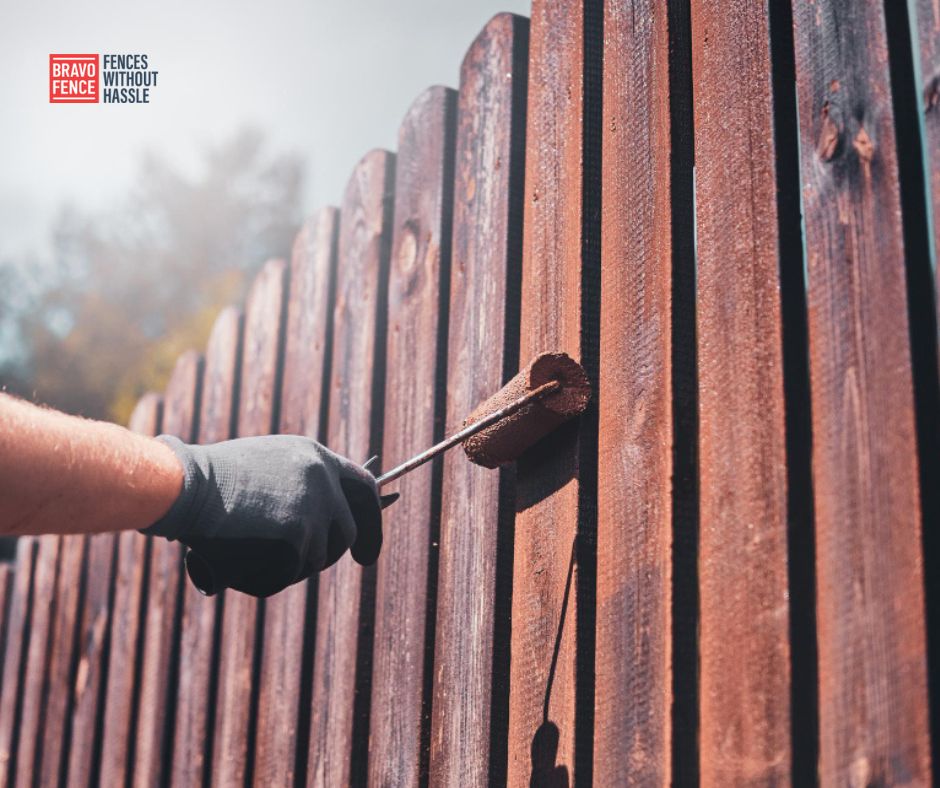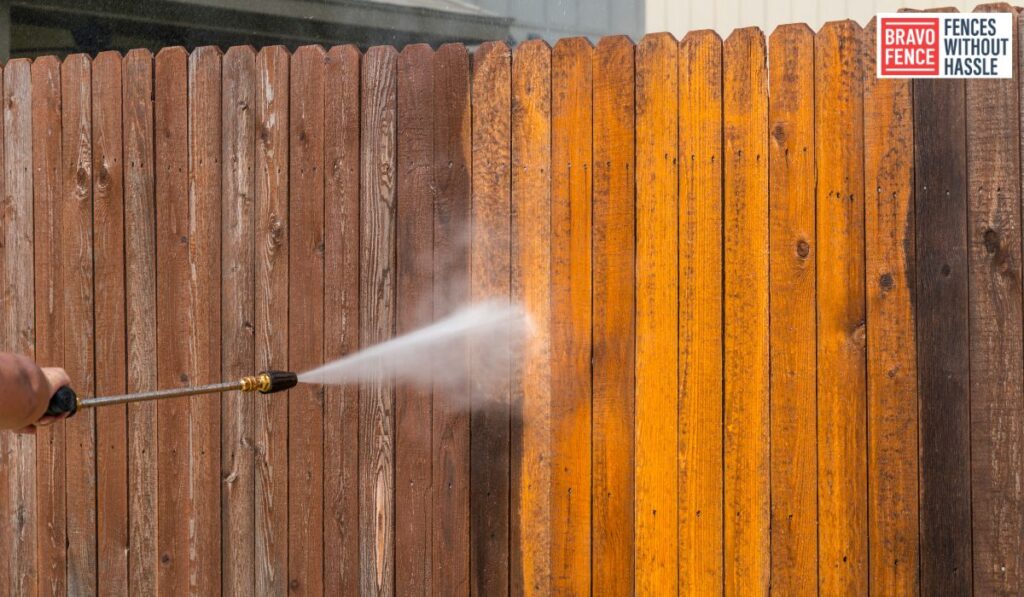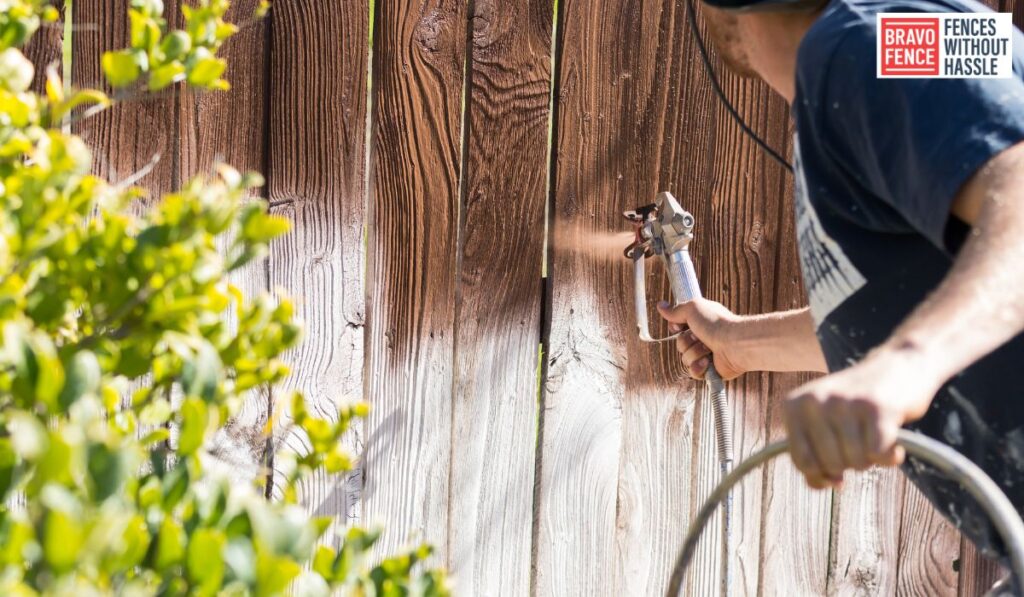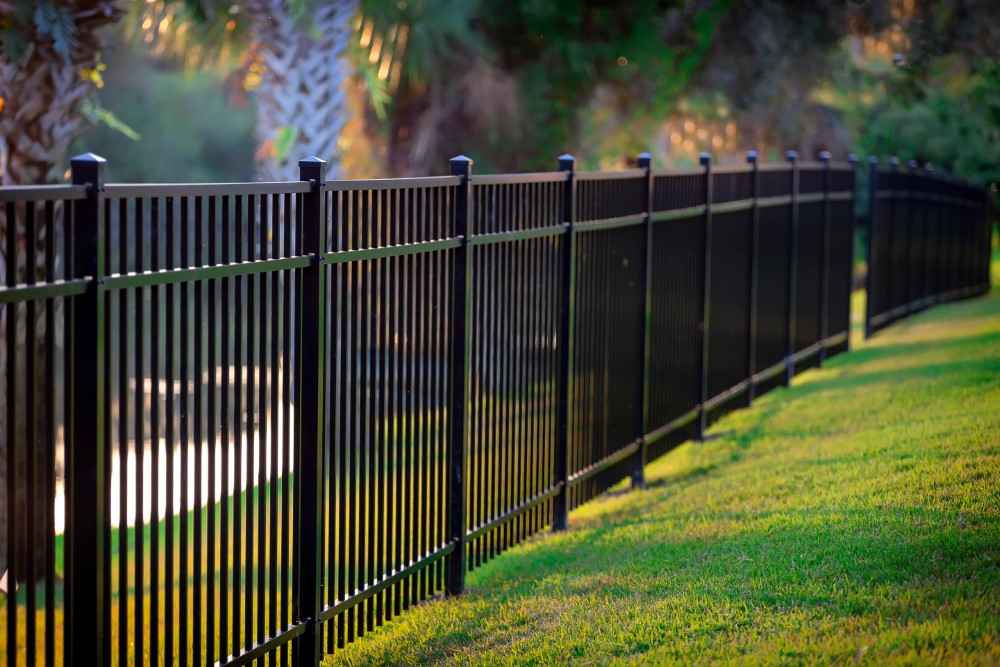
Staining Success: Navigating 2024’s Fence Staining Costs
As homeowners and property managers look to enhance the aesthetic appeal and longevity of their fences, the importance of regular staining cannot be overstated. In 2024, the wall-staining industry witnessed various changes, from material advancements to fluctuations in labor costs. This article aims to provide a comprehensive guide on navigating the current landscape of fence staining costs, empowering property owners to make informed decisions and achieve staining success.
Factors Influencing Fence Staining Costs:
Fence Material:
The type of material your fence is constructed from significantly impacts staining costs. Common materials include wood, vinyl, metal, and composite. Each material has unique characteristics, requiring specific stains and preparation methods, consequently affecting the overall cost.

Fence Size and Height:
The size and height of your fence directly correlate with the amount of stain needed and the time required for completion. More extensive or taller fences will naturally incur higher costs due to increased material and labor demands.
Preparation and Repairs:
Proper preparation is critical to a successful and long-lasting stain application. If your fence requires repairs or extensive cleaning before staining, additional costs may accrue. These steps are necessary to maintain the quality of the stain and avoid premature deterioration.
Stain Quality:
The quality of the stain used plays a crucial role in determining its durability and overall effectiveness. Higher-quality stains tend to cost more but provide better protection against the elements, preserving the fence’s appearance and structural integrity.
Labor Costs:
Labor costs can vary based on geographic location, the complexity of the staining process, and the level of expertise required. Hiring professional contractors may come at a higher price, but it often ensures a more precise and efficient job.
Environmental Conditions:
Weather conditions can impact staining costs as they dictate the ideal time for staining. Extreme temperatures, high humidity, or rainy weather may necessitate additional precautions or delays, potentially influencing the overall cost.
Navigating 2024’s Fence Staining Costs:
Research and Compare Quotes:
Start by researching local fence-staining contractors and soliciting multiple quotes. Compare the services offered, stain quality, and labor costs to ensure you are getting the best value for your investment.
Consider DIY Options:
For homeowners with a penchant for DIY projects, staining their fences themselves can be a cost-effective alternative. However, to avoid potential pitfalls, it’s crucial to accurately assess their skills and the complexity of the staining process.
Prioritize Proper Preparation:
To maximize the longevity of your fence stain, invest in proper preparation. Address any repairs, clean surfaces thoroughly, and choose the right stain for your fence material. This upfront investment can save you money in the long run by extending the life of the stain.
Choose Quality Over Cost:
While budget considerations are essential, compromising on stain quality may lead to frequent reapplications and premature fading. Invest in a high-quality stain that provides superior protection, ensuring long-lasting results and potential cost savings over time.
Factor in Future Maintenance:
Consider the long-term maintenance requirements of your chosen stain. Some stains may require more frequent reapplications, impacting ongoing costs. Balancing initial expenses with future maintenance needs is crucial for a sustainable and cost-effective solution.
Embrace Eco-Friendly Options:
As environmental consciousness grows, so does the demand for eco-friendly staining options. Consider using water-based or low-VOC (volatile organic compounds) stains that have minimal environmental impact. While these stains may have a slightly higher upfront cost, they contribute to a sustainable approach and may offer long-term benefits for both your fence and the environment.
Explore Advanced Staining Technologies:
Stay abreast of the latest advancements in staining technologies. Some innovative products in 2024 may offer features like UV resistance, self-healing properties, or extended durability. While these high-tech stains may come at a premium, they could prove cost-effective in the long run by reducing the frequency of reapplications.

Utilize Online Resources:
Leverage online resources to stay informed about market trends, product reviews, and DIY tips. Social media platforms, forums, and specialized websites can provide valuable insights from other homeowners who have tackled fence-staining projects. This collective wisdom can aid in decision-making and potentially save costs through shared experiences.
Negotiate with Contractors:
When working with professional contractors, don’t hesitate to negotiate. Obtain multiple quotes and discuss the scope of work, materials, and labor costs in detail. Some contractors may offer discounts for off-peak seasons, bundle deals for various services, or loyalty incentives. Negotiating effectively can help you secure a competitive price without compromising on quality.
Plan for Future Upgrades:
If your fence is approaching the end of its lifespan, consider planning for a potential upgrade during the staining process. Upgrading to a more durable or aesthetically pleasing material may involve additional costs upfront but could provide long-term benefits, reducing the frequency of staining and overall maintenance expenses.
Educate Yourself on Application Techniques:
Whether you choose a professional or DIY approach, educate yourself on proper staining techniques. Understanding the correct application methods, drying times, and post-staining care can contribute to a more prosperous and cost-effective project. This knowledge ensures that the stain is applied optimally, maximizing its protective qualities.
Monitor Market Trends
Keep an eye on market trends related to fence staining. New products, techniques, or services may emerge that can positively impact costs or offer better results. Being aware of industry innovations allows you to make informed decisions that align with both your budget and the latest advancements in fence staining.
Conclusion
Navigating 2024’s fence staining costs involves a blend of traditional wisdom and embracing innovative solutions. By considering eco-friendly options, exploring advanced technologies, utilizing online resources, negotiating effectively, planning for future upgrades, and educating yourself on application techniques, you can ensure a successful and cost-effective fence-staining project. Remember, the key to staining success lies not only in minimizing immediate costs but also in maximizing the long-term benefits of your property’s curb appeal and structural integrity.
Ready to transform your fence into a stunning and durable asset? Contact Bravo Fence Company for expert advice and professional staining services. Click here to contact our team and embark on your journey to a beautifully stained fence that will stand the test of time.
FAQs
What factors will influence fence staining costs in 2024?
Several factors impact fence staining costs, including the material of the fence, its size and height, preparation needs, stain quality, labor costs, and environmental conditions during the staining process.
How does the type of material affect staining costs?
Different materials, such as wood, vinyl, metal, and composite, have unique characteristics that require specific stains and preparation methods. The choice of material influences the overall cost of staining.
Are there additional costs associated with more extensive or taller fences?
Yes, more extensive or taller fences require more stain and increased labor time, resulting in higher overall costs compared to smaller or shorter fences.
Why is preparation necessary, and how does it impact costs?
Proper preparation ensures a successful and long-lasting stain application. If repairs or extensive cleaning are needed, additional costs may accrue. Neglecting preparation steps can compromise stain quality.
Does stain quality make a significant difference in costs?
Yes, higher quality stains may have a higher upfront cost but provide better protection against the elements, preserving the fence’s appearance and structural integrity over time.
How do labor costs vary, and what influences them?
Labor costs can vary based on geographic location, the complexity of the staining process, and the level of expertise required. Professional contractors may be more expensive but often ensure a more precise and efficient job.
How do weather conditions impact staining costs?
Extreme temperatures, high humidity, or rainy weather may necessitate additional precautions or delays during the staining process, potentially influencing overall costs.
What should homeowners do to navigate 2024’s fence staining costs?
Homeowners should research and compare quotes from local contractors, consider DIY options, prioritize proper preparation, choose quality over cost, factor in future maintenance, explore eco-friendly options, stay informed about staining technologies, and negotiate effectively with contractors.
Are there benefits to using eco-friendly staining options?
Yes, eco-friendly options, such as water-based or low-VOC stains, contribute to sustainability and may offer long-term benefits. Although they may have a slightly higher upfront cost, they can reduce environmental impact and potential long-term expenses.
How can homeowners stay informed about market trends in fence staining?
Homeowners can utilize online resources, such as social media platforms, forums, and specialized websites, to gather insights from others who have tackled fence-staining projects. Monitoring market trends helps make informed decisions aligned with the latest advancements in fence staining.
Should homeowners negotiate with staining contractors?
Yes, negotiating with contractors is encouraged. Homeowners should obtain multiple quotes and discuss the scope of work, materials, and labor costs in detail. Effective negotiation may lead to competitive prices without compromising on quality.
Is upgrading the fence material a cost-effective consideration during staining?
Upgrading to a more durable or aesthetically pleasing material may involve additional upfront costs but could provide long-term benefits, reducing the frequency of staining and overall maintenance expenses.
Why is educating oneself on staining techniques important?
Whether choosing a professional or DIY approach, understanding proper staining techniques, application methods, drying times, and post-staining care contributes to a more prosperous and cost-effective project, maximizing the protective qualities of the stain.
Tags: Best metal fence staining company, fence staining company, Fence Staining Costs, Metal fence staining company, Professional fence staining, Wood fence staining company
